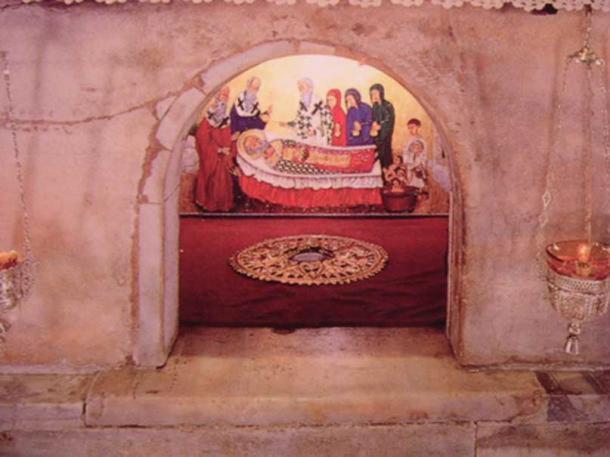
Bone Analysis Takes Us One Step Further to Confirming the Santa Claus Legend
The legendary nature of Santa Claus is mostly understood. However, the existence of Saint Nicholas, often said to be the inspiration for the jolly Christmas character, has been less agreed upon. With this question in hand, scientists decided to turn to relics of the famed saint to discover the possible nature of his existence. They decided that the bones match the dates, but is that enough to prove the historicity of Saint Nicholas?
St Nicholas (270-343 AD) is one of the most popular Orthodox saints. He was born into a wealthy family in the village of Patara, an area which was once Greek but is now part of Turkey. Stories say Nicholas used his entire inheritance to assist the needy, the sick, and the suffering. He became known for his generosity to those in need and his love for children. Saint Nicholas is said to have died on December 6 and on the eve of his death, children were given gifts in his honor. Saint Nicholas’ modern name in English is Santa Claus, which comes from the Dutch ‘Sinterklaas’.

A modern depiction of Santa Claus. (CC0)
St Nicholas’ fame may also be at the root of skepticism against the saint having ever existed. As Phys.org reports, one of the issues sceptics present regarding St Nicholas’ existence is that his relics are supposedly being held in churches and private collections all over Europe.
- Christkind: How Does this Christmas Gift-Bringer Differ from Santa Claus?
- When Millions Were Dropping Dead From the Plague, The 14 Holy Helpers Were Summoned to Intercede
Actually, it was just a couple of months ago when researchers working in Turkey claimed St Nicholas’ remains are not in Bari, but located in the church of Saint Nicholas in Demre. “The world’s eyes will be set on here. We claim that St. Nicholas has been kept in this temple without any damage. We are at the last stage. If we get the results, Antalya’s tourism will gain big momentum. We will start discussions at an international level after the excavations,” an excited Cemil Karabayram, Antalya Director of Surveying and Monuments, told Hurriyet at the time.

Tomb in Saint Nicholas Church, Demre, that once housed remains previously believed to be Saint Nicholas. (CC BY SA 3.0)
People question whether all the bones associated with St Nicholas could have come from the same person. The bone analyzed in this research is owned by Father Dennis O"Neill, of St. Martha of Bethany Church, Shrine of All Saints in Morton Grove Illinois, USA.
Professor Tom Higham of Oxford Relics Cluster at Keble College's Advanced Studies Centre provides some support for a cautious perspective on the relics associated with the saint. He said:
“Many relics that we study turn out to date to a period somewhat later than the historic attestation would suggest. This bone fragment, in contrast, suggests that we could possibly be looking at remains from St Nicholas himself.”
This fragment of bone is supposed to have come from remains buried in a crypt beneath a marble alter in the Basilica di San Nicola, Bari, Southern Puglia, Italy. These religious relics associated with St Nicholas are said to have been kept at the basilica since 1087. Despite the recent claims made for his remains being in Turkey, most researchers believe the religious relics linked to St Nicholas are held in Bari and Venice.

Tomb in Bari, Italy, where many researchers believe Saint Nicholas’ remains are currently kept. (CC BY-SA 3.0 )
The radio carbon analysis dates the micro sample of the bone fragment to the 4th century AD – a time which fits with the date historians often provide for the death of St Nicholas. According to Phys.org, “The results suggest that the bones could in principle be authentic and belong to the saint.”
- True Remains of the Saint Behind the Santa Myth Believed Found in Turkey
- Santa’s Horned Helper: The Fearsome Legend of Krampus, Christmas Punisher
Reflecting on the results, Dr. Georges Kazan, also of the Oxford Relics Cluster at Keble College's Advanced Studies Centre, said:
“These results encourage us to now turn to the Bari and Venice relics to attempt to show that the bone remains are from the same individual. We can do this using ancient palaeogenomics, or DNA testing. It is exciting to think that these relics, which date from such an ancient time, could in fact be genuine.”
This means that while it is an exciting prospect that the bones may really belong to the saint who inspired Santa Claus, we cannot be sure. Professor Higham also called for caution when discussing the results when he concluded: “Science is not able to definitely prove that it is, it can only prove that it is not, however.”

Fresco of Saint Nicholas. Source: BigStockPhoto
Top Image: Portrait of Saint Nicholas. (BigStockPhoto) Relic of St Nicholas (pelvis fragment) at St. Martha of Bethany Church/Shrine of All Saints, Morton Grove Ill., USA. (T. Higham & G. Kazan)
















Comments
My understanding is that Father Christmas is many (thousands, possibly) of years older than any Christian saint.The two should not be confused or mixed up together. Yule has traditionally, nothing to do with Christianity. Father Christmas was not flesh, blood and bone but a facsimile for something entirely different to our current understanding.